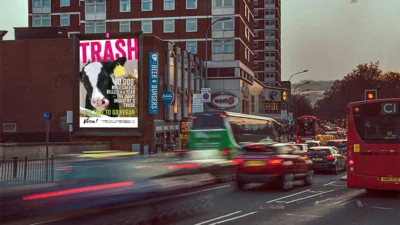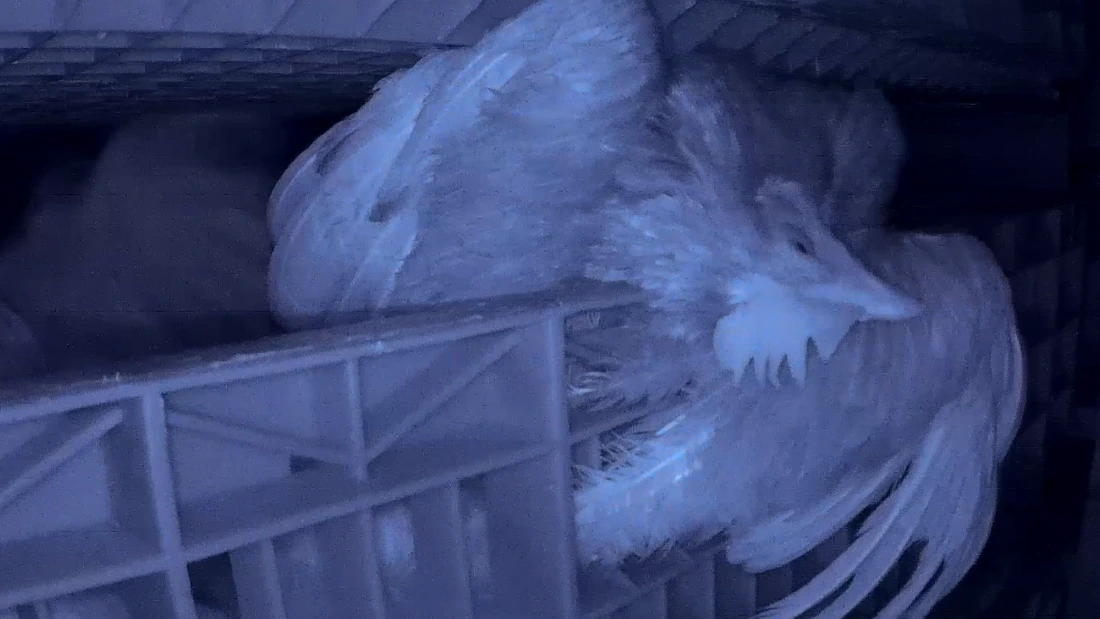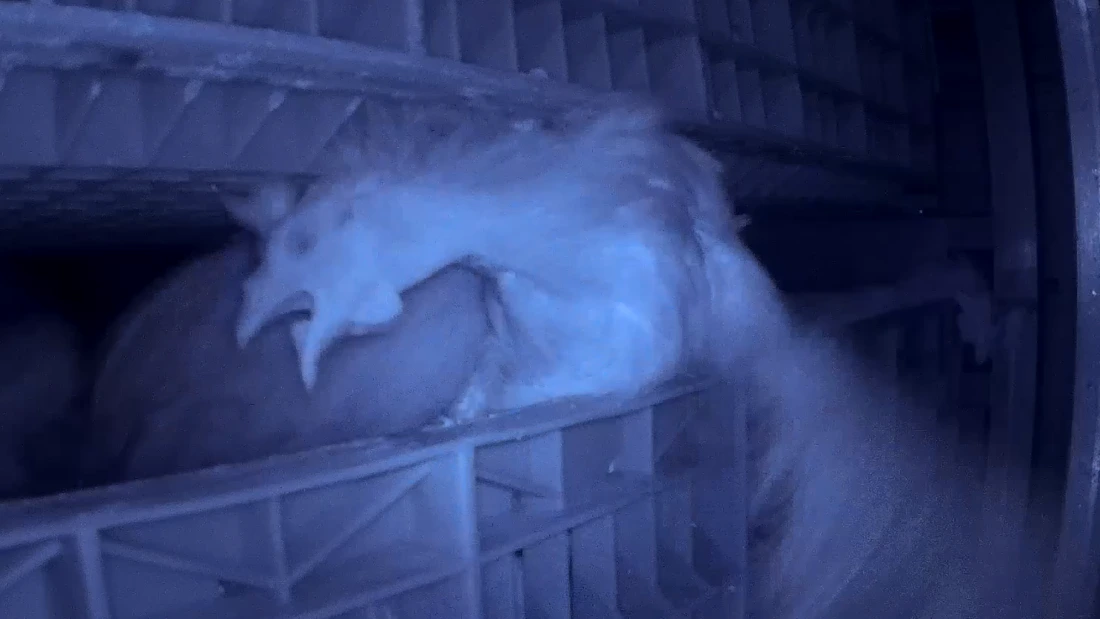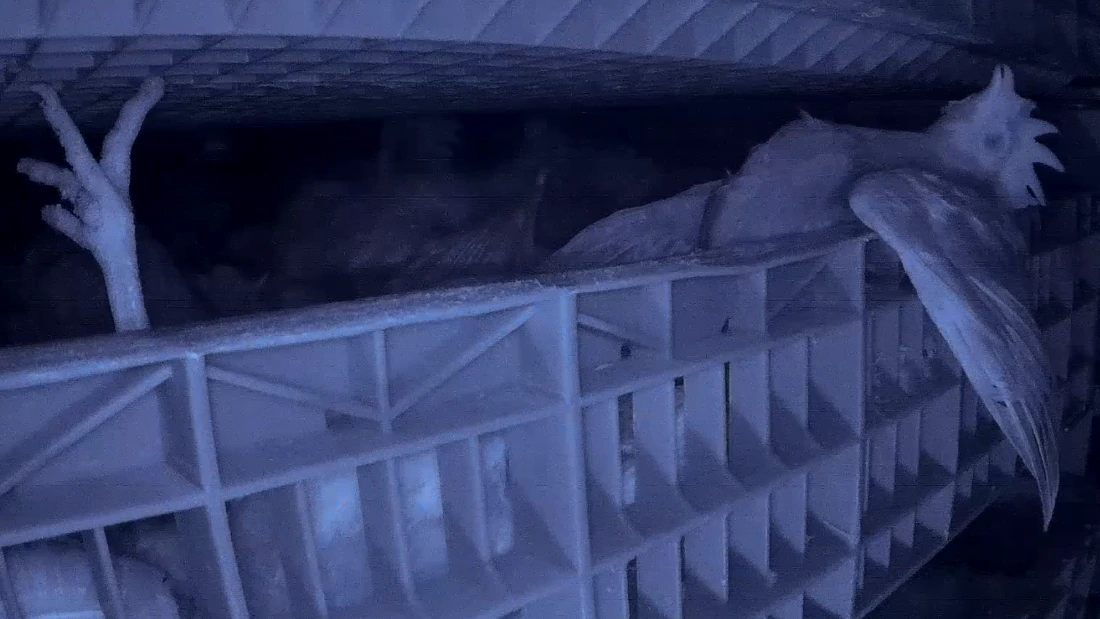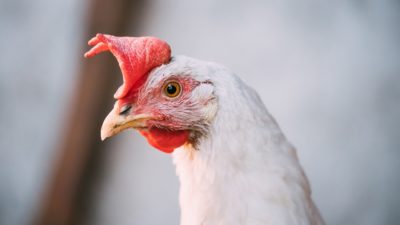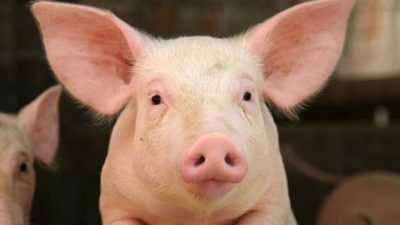Chicken Gassing in the UK

In the UK, over ONE BILLION chickens are slaughtered every year – and 78 per cent of them will die painfully in a gas chamber:
- 77 per cent of chickens bred for meat, after an artificially short five to seven weeks of life
- 99.6 per cent of egg laying hens, having delivered eggs at grossly unnatural high rates – when production falls, they are killed
- Nearly all male chicks, around 42.5 million regarded useless by the egg industry
Carbon dioxide gassing kills chickens by starving their brains of oxygen. In the slow, agonising lead-up to their death, it forms a painful acidic layer on their eyes, throat and lungs, making them feel as if they’re burning from the inside out. Chickens scream in panic and pain and desperately try to escape the gas chamber.
In the UK, almost 1.2 billion of these intelligent, empathetic and sentient animals are slaughtered for meat every year – that’s over three million a day – making them by far the most killed land-based farmed animal, outnumbering all others three to one. This is made possible due to intensive selective breeding, which means chickens grow faster than their ancestors, with broiler hens going to slaughter at just six to seven weeks. Their natural lifespan would be eight to 12 years.
In summer 2025, there were 2,327 ‘specialist’ (meaning organic or free range) poultry farms in the UK – neither the government nor the industry provide clear statistics on the overall number of farms. The terrifying scale of the cruelty continues to grow as profits are prioritised over even the smallest semblance of compassion. 95 per cent of broiler chickens are cruelly reared in a factory farms, so, for most chickens in the UK, the concrete walls of these industrial hellholes will be the last and likely only thing they will see before being ruthlessly gassed to death.
The UK Food Standards Agency (FSA) regulates slaughterhouses in England, Wales and Northern Ireland, while Food Standards Scotland (FSS) performs the same role in Scotland. Monthly ‘approved establishment’ lists show that, as of 1 January 2025, 50 slaughterhouses in England and Wales, seven in Scotland and five in Northern Ireland were licensed to process poultry. Both regulators work with local authorities to enforce hygiene, welfare and food-safety law in every approved plant. Despite all this regulation, chickens and other factory-farmed animals in the UK have very little legal protection and endure suffering on a scale that is hard to comprehend – unless you’ve seen it.
Before slaughter, UK chickens must be stunned either by high-concentration carbon dioxide gas, also known as controlled-atmosphere stunning (CAS), or by electrical waterbath (electronarcosis), intended to keep the bird unconscious until they bleed out.
The results from the FSA’s 2024 census show that CAS slaughter is by far the most used method in England and Wales.
| Broilers (per cent slaughtered using this method) | Spent Laying Hens (per cent slaughtered using this method) | |
|---|---|---|
| CAS-killed | 77 | 99.6 |
| Halal-compliant water bath | 18 | N/A |
| Slaughtered without prior stunning | 3 | N/A |
| Other stun methods | 1 | <0.5 |
Parallel surveys are not undertaken in Scotland or Northern Ireland, but the devolved regulators report the same commercial practices, so the percentages are taken as representative of the UK.
Chickens are exposed to gas in two stages: less than 40 per cent CO₂ in the induction section, then more than 80 per cent CO₂ within 30 seconds. UK law states:
“No person may stun poultry by exposure to gas unless each bird is exposed to the gas for long enough to ensure it is killed.”1 The Welfare of Animals at the Time of Killing (England) Regulations 2015, Schedule 2, paragraph 41
The EU’s Scientific Panel on Animal Health and Welfare warns that even 30 per cent CO₂ is “aversive… painful… and elicits hyperventilation and gasping before loss of consciousness”.2 European Food Safety Authority, 2004. Commercial systems keep chickens in a gas mixture with high carbon dioxide levels for about 90 to 120 seconds before moving them to the next stage. This timing is based on brain activity studies that show chickens’ brains stop working (brain death) after about 60 seconds in this environment. Thus, while CAS replaces the handling stress of live shackling, it still inflicts a 35 to 50 second period of conscious respiratory distress on the vast majority of chickens slaughtered every year.
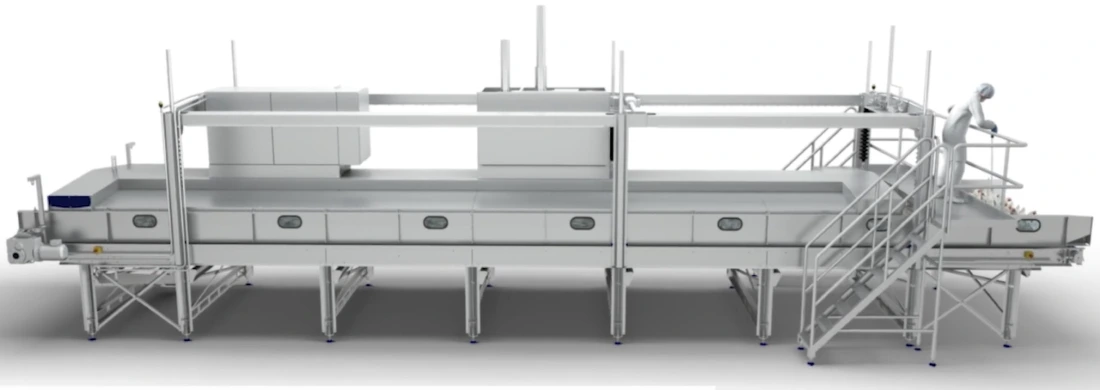
In industry-standard machines, such as the Stork, broilers remain inside transport drawers, which travel horizontally on a slow conveyor through a five-section gas tunnel. Each section has its own programmed CO₂ set point, so the chickens are exposed to increasing concentrations of CO₂. Starting with less than 30 per cent CO₂ in the first zones for sedation, rising to more than 80 per cent CO₂ in the final zones to cause death. The birds are not removed from the crates during the process and the tunnel’s sealed design keeps the gas concentration stable throughout the cycle.
The meat industry claims that the advantage of high-concentration gas over electrical stunning is that animals can be stunned in groups, with minimal handling or restraint. They say that for large operations, with high throughput rates, gas stunning is often the more reliable and consistent method as it reduces the chance of human error. This is an admission that electrical stunning frequently fails, meaning animals regain consciousness when they are ‘stuck’ (knifed in the throat to bleed to death).
We must act now on chicken gassing. Find out what you can do to help end this cruel practice once and for all.


